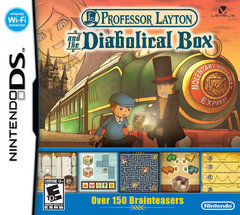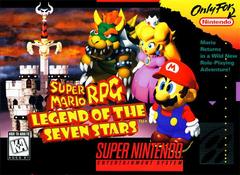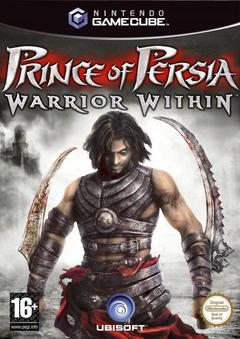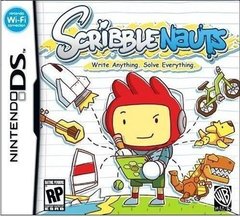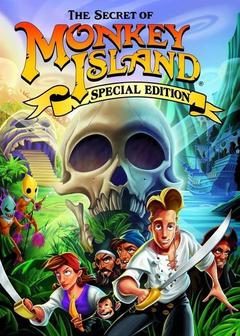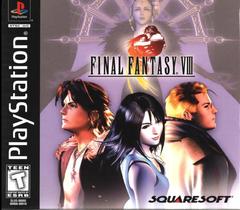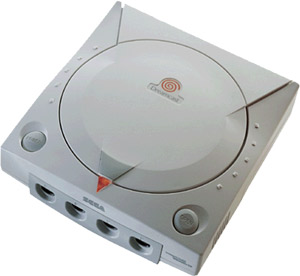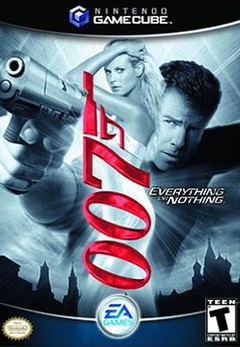Professor Layton and the Diabolical Box
Professional puzzle-solver and tea lover Professor Hershel Layton and young Luke, his apprentice, are back to solving the ultimate mystery in Professor Layton and the Diabolical Box, the sequel to 2008's Curious Village. The game plays as a Myst-like point-and-click with brain-teasers thrown in every couple of minutes; and not the random, bumbling puzzles of Myst, but random, Mensa head-scratchers that will have you reaching for the nearest bottle of headache medicine. Diabolical Box is not just about solving puzzle after puzzle, however, there's a series of unsolved mysteries at hand along with a big cast of characters to help and hinder along the way. The game is chock full of wit and charm, and it is truly hard to put down.
Developers Level-5 seemingly got the formula right the first time, as not much has changed for the sequel (the third game was released last year in Japan and the fourth is almost out there too!). We still have the lovable British accents, the endless number of puzzles, and nearly the same enticing soundtrack. Let's get into my review of Professor Layton and the Diabolical Box.
Super Mario RPG: Legend of the Seven Stars
Shortly before they began squabbling about cartridges versus compact discs, and long before Square-Enix came crawling back for a suck at the Nintendo DS teat, Nintendo and SquareSoft got around quite nicely. One of the results of this relationship was Super Mario RPG: Legend of the Seven Stars, a Japanese style role-playing game set in the Super Mario Bros. universe. It's one of those games that no one would have ever thought to ask for, but was so successful, it spawned the Paper Mario series that landed on later Nintendo systems (with no help from Square) and the Mario and Luigi RPG series found on their handhelds.
The game itself was quite ambitious, even beyond the cooperation of two major developers. The cartridge had its own onboard CPU, not to be confused with the popular graphics Super FX chip, but simply a co-processor to the main CPU already in the Super Nintendo. The ability to include additional hardware on the actual game cartridge was one of the amazing design decisions that revealed the foresight the hardware team had and kept the console highly competitive through 1996 when Super Mario RPG was released.
Super Mario RPG ended up being one of the last, great Super Nintendo games, being released along with some of my other favorites including Harvest Moon and Kirby Super Star. It's the end of the classic era, in my opinion, but marks the beginning of some bold moves by Nintendo. Here's the first hour of Super Mario RPG for the Super Nintendo.
Prince of Persia: Warrior Within
Prince of Persia: Warrior Within is the sequel to Prince of Persia: The Sands of Time, which was itself a relaunch of a popular 2D platformer from the early 1990s. The relaunch, developed by Ubisoft Montreal, eventually became a trilogy, released on PlayStation 2, XBox, GameCube, PC, and even a version for the GameBoy Advance. The series has since been relaunched again on the current generation of systems.
Sands of Time was very well received for many reasons, including beautiful art direction, spot-on controls, fluid animations, clever mechanics and a wonderful intangible quality. It had two main downfalls: the combat was repetitive and the game was short.
Warrior Within sets out to correct both of these follies, boasting a longer story and a much-improved combat engine that takes the acrobatic attacks of the first game and expands them to a move list that takes up several pages in the instruction manual.
With these improvements, the game has also "matured" in the video game sense, which as usual means blood and scantily-clad women. Oh, and heavy metal. I'm not really sure why Ubisoft felt this was necessary; I'm assuming it was based on customer feedback.
I played through Prince of Persia: The Sands of time a while back and enjoyed it very much. When it was over I wished it wasn't, and that's what sequels are for. Will Warrior Within satisfy my craving for more acrobatic platforming/adventuring featuring the Prince of Persia?
Note: If I say "the first game" I'm referring to Prince of Persia: The Sands of Time, not the original Prince of Persia game.
Mass Effect: Electra in Space
Daddy issues: it's a common phrase thrown out to explain many character issues, especially against women. Psychologists call it the Electra Complex from the Greek mythology of Electra, a woman who had her brother kill their mother after she had been involved in their father's death. Many would say Electra had daddy issues, and she probably did, because of her response to her father's death at her mother's hand. While the complex is as old as mythology, it's still commonly used today in literature, television, and yes, even video games. This is the first in a sporadic series of articles on daddy (and mommy - Oedipal) issues seen in video games. And since I'm such a big fan of Mass Effect, it seems like the perfect place to start.
The number of characters in Mass Effect makes this a great place to begin, many of them are pretty complex, not only due to their parental conflicts, but because many of them are aliens and have a unique culture that let's the writers exploit Electra and Oedipus in new ways. The main character, Shepard, can recruit six additional characters along the way. Talking with them as the game progresses reveals their backstory and how they ended up where they are today. No too few of them are there almost certainly because of the ways their father was or wasn't present in their life. Let's take a look at some of the characters from Mass Effect and their daddy issues.
Professor Layton and the Diabolical Box
A year and a half ago I had the distinct pleasure of playing Professor Layton and the Curious Village, a mystery game packed with puzzles set in, well, a very curious village. The game was a hit with me and many others, and while Level-5 has doled out three Layton games already and is a few months away from the fourth, they're just getting around to releasing the second outside of Japan. We wait patiently, however, and are rewarded with Professor Layton and the Diabolical Box. Nintendo is serving as the publisher in North America, Europe, and Australia, and has done a magnificent job releasing a potentially very niche puzzler to a wider audience. Honestly, the series is filled with such ultra-politeness and quirky British voice talent it's a wonder that something like this has taken off. Professor Layton is simply a perfect storm of great puzzles and marvelous atmosphere.
Level-5 is of course also the developer of Rogue Galaxy, an RPG I recently reviewed for the PlayStation 2. I'm becoming more and more impressed by their range of games they're developing and publishing, and other companies are too, including Square Enix which trusted them with Dragon Quest IX.
The release schedule of the Professor Layton series seems very similar to that of Phoenix Wright, with the West just starting to get the series after a few of them had already been released in Japan. In some ways, this is great because we know that there are a whole slew of games coming, but I just hope it doesn't start feeling stale like Ace Attorney did. Well, here's the first hour of Professor Layton and the Diabolical Box.
Scribblenauts
Scribblenauts is the much-hyped puzzle game from developers 5th Cell that garnered a lot of awards and attention after this year’s E3. 5th Cell are the creators of Drawn to Life, a game that managed to sell over a million copies and put them on the map. Scribblenauts is a game that promises thousands of items that interact with each other in realistic and unique ways, allowing gamers to come up with their own innovative ideas when it comes to solving a level. The first hour of this game will vary heavily for anyone playing the game, as it’s possible to spend hours just on the menu screen.
Editor's Note: Grant begged to review this game, and he gets his reward. About three months back I previewed the game, comparing it to 5th Cell's predecessor, Drawn to Life. While I was less than pleased with that game, Scribblenauts seemed to be on its way to fixing all of its (many) problems. Let's see if the first hour of Scribblenauts starts off in the right direction.
The Secret of Monkey Island: Special Edition
Back in the day, Lucasarts made good games. They made point-and-click adventures, some of the best ever. One thing their adventures were famous for was an odd sense of humor.
Secret of Monkey Island was Lucasarts' first humor game. I've always wanted to play it, so when they repackaged it with new graphics and voice acting, I jumped on it.
I played the first hour for review, and well, I couldn't stop playing: I beat the whole game in the next couple of days. I think that says enough about the first hour experience. Here's the full review.
Secret of Monkey Island: Special Edition is a repackaging of Secret of Monkey Island. It follows the story of Guybrush Threepwood, a young man who wants nothing more than to sail the high seas, pillaging and plundering, looting and.... well he wants to be a pirate. He starts off on Melee Island to talk to the Pirate Leaders in order to join them. They set him off with three seemingly impossible tasks to accomplish. Along the way he might just fall in love, confront a ghost pirate, and slide down a cable on a rubber-chicken-with-a-pulley-in-the-middle.
Final Fantasy VIII
I used to call it one of my favorite games of all-time, I'm honestly not sure where it falls now since I've only played it once, and that game started 10 years ago. Final Fantasy VIII was released on September 9th, 1999, Sony's answer to the Sega Dreamcast North American release on the same day. I plowed through it in epic sessions of high school gaming, finishing it less than a month later after 60+ hours of gaming. While I'm a huge fan of the Dreamcast and will probably dig mine out over the next few days to honor its 10th anniversary also, Final Fantasy VIII just clicked with me. I'm not going to get into Final Fantasy VII versus VIII or anything, save that for some forums, I will, however, get into the first hour of Final Fantasy VIII shortly.
Well, I said I wouldn't get into FF7, but that game had a great first hour! Especially for a Japanese role-playing game that usually spends more time explaining the intricacies of the turn-based battle system than actually being, you know... fun. So it's been a while since I started a new game in Final Fantasy VIII, I remember the great opening video, and that's about it. So here's the setting: it's 1999, the sequel to one of the most popular games ever is now in your hands, and you're about to make the decision to either sign the next month away to it, or try to recover some of your cash at EB Games. So let's play the first hour of Final Fantasy VIII and make our decision.
A Fool's Lament: Tribute to the Dreamcast
The year is 1999; the date, September the ninth. The plants did their job and release day is here. The office was even more busy and tense than usual as all eyes followed the first projections emerging from the printer. We had every reason to be confident. All our test groups, all forecasters, all street teams gave nothing but guaranteed success. The mistakes and unfortunate failures of the past would soon wash away. No longer would we be forced the constant reminders of financial inadequacy or our loved ones' questioning about job security. Yes, my stress is lower, yes, I'm getting more sleep. These bags will be removed, hard work pays off. Sega is back! Segata Sanshiro is smiling somewhere, proud of his children. The only question is, how could so many people be so very wrong and so very blind?
The year is 1999 and the wave of inevitability has already overtaken us. Not in our minds, mind you. Our minds believed that we had a real renaissance, a true phoenix inside a little white box. But the pieces were already in play and our actions merely delayed the truth. Sega could no longer prosper in this environment. The bridges were burned and one company can only take itself so far on its own. The climate is forever changed. Can you blame us for grasping onto misguided hope? Hardware is a man's business, certainly no haven for a child's imagination and desires. I guess our parents never warned us. No one wants or needs us anymore. The Ultimate Gaming Machine? Gaming has become passé. They said we needed a centralized entertainment console, a hub for the consumer to plug their lives into. We could connect them to a constant stream of bank withdrawals for products they are convinced to need. We replied, “We are a gaming company.” They spit on us and our toy. They were the smart ones.
007: Everything or Nothing
James Bond: he's the original super-spy. The secret agent with style, he always gets his man... and his woman.
Unfortunately he hasn't always fared so well in video games. Except for Goldeneye, games bearing the 007 insignia have turned out less than stellar.
I recently got my hands on a copy of 007: Everything or Nothing. This EA-published game on the GameCube (it was also released on the PS2 and XBox) was the first 007 game to ditch the first-person-shooter genre that Goldeneye established in favor of a third-person action adventure. (There had been a third-person 007 game on the PlayStation, but it was received poorly and all subsequent 007 games were first-person-shooters.)
Also, this game has more stars than most Hollywood movies. Pierce Brosnan voices 007, Dame Judy Dench is M, John Cleese is Q, our villain is Willem Dafoe, the Bond girls are Heidi Klum and Shannon Elizabeth, with Mya for good measure, Richard Kiel is Jaws... and all the characters are modeled after their actors.
Will 007 get a video game worthy of his refined demeanor, or is this another impotent cash-in on the 007 franchise? Will a cast full of Hollywood stars take this game to the next level, or will these actors fail to make the transition to video game voice acting? Will 007 introduce himself as "Bond, James Bond?" Let's find out now:

